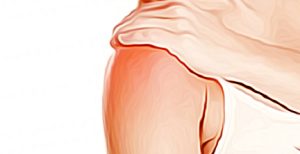 I now bring to you Part 3 of my three-part blog series which discusses some of the various types of shoulder surgeries. As always, I would like to add a disclaimer that this is my own research which I have done using various information sources. I am currently studying this information in my own time to increase my general knowledge and I created this blog series to create easy to read information on what I have learnt. I hope that this information can be beneficial to others out there who would like to broaden their knowledge base. My research on rotator cuff repair is as follows:
I now bring to you Part 3 of my three-part blog series which discusses some of the various types of shoulder surgeries. As always, I would like to add a disclaimer that this is my own research which I have done using various information sources. I am currently studying this information in my own time to increase my general knowledge and I created this blog series to create easy to read information on what I have learnt. I hope that this information can be beneficial to others out there who would like to broaden their knowledge base. My research on rotator cuff repair is as follows:
A rotator cuff repair operation is performed using an arthroscope and aims to repair rotator cuff tendons that have been damaged. To perform a rotator cuff repair, the surgeon will begin by inspecting the joint. This way, the surgeon can make an accurate informed assessment of the damage to the rotator cuff. Once an assessment has been made, anything that is irritating the rotator cuff (which in many cases is bone spurs and inflamed tissue) is cleared using subacromial decompression. At the end of the rotator cuff repair, the surgeon will free the torn tendon from scar tissue. The surgeon will then, using anchors and sutures, repair this back to the bone. Note: I am still getting my head around what exactly this means.
Post the rotator cuff repair surgery, patients will be placed in a sling and will return home the following day. This is so that the patient can be monitored post-surgery. The highly-regarded shoulder surgeon located in the Melbourne CBD will then recommend and refer the patient to a physiotherapist. The patient will be made aware of a number of restrictions placed on their shoulder movement, in order to help ensure the repaired structures have time to fully heal. If these restrictions are not followed, it may prolong the healing process. A physio will help the patient regain shoulder strength in the months following the surgery.
This concludes my three-part blog series.